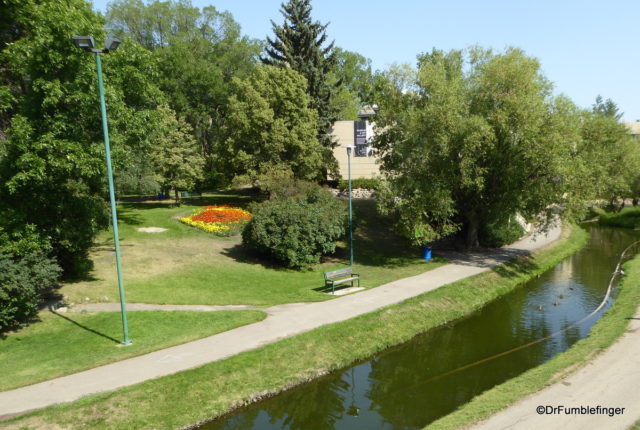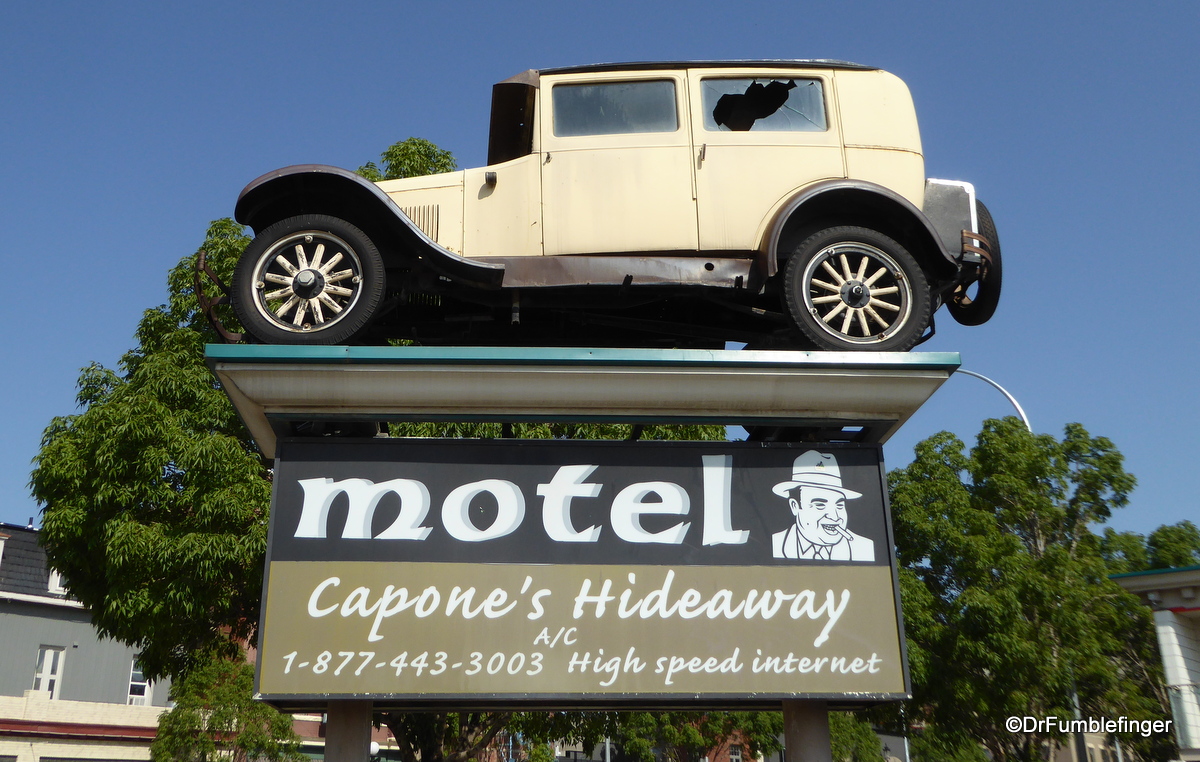Get update alerts
Locations
- .All Trips
- Art
- Car Culture
- Central America/Caribbean
- Food
- Food Tour
- Pic of the Week
- Sl;ovenia
.All Trips / Central Canada / North America / Saskatchewan

“Pic of the Week”, February 24, 2023: Regina Lace, Saskatchewan

An interesting piece of art is Stephan Braithwaite and Douglas Bamford’s Regina Lace. It was completed in 2009 as part of a public artwork project and is a two-part sculpture celebrating the immigrant history of Regina.
1) On the east side are nine bronze figures cast from residents of Regina, representing a variety of backgrounds symbolizing the mixed cultural diversity of the city. Part of this is show in the photo above, with more detail views attached.
(West portion of Regina Lace)
2) The west facing portion is a monolith that appears to be a massive pamphlet filled with stories. The piece is actually steel plating, a lace pattern worked into its borders. Sitting at its base is a young African immigrant.
I thought it …
Tagged art, Regina, Regina Lace, street art
Rambling Around Moose Jaw

There aren’t many large cities on the Canadian prairies, and these are often separated by hundreds of miles. While far from large, with less than 35,000 residents, Moose Jaw is the 4th largest city in Saskatchewan. When driving across the TransCanada highway, Moose Jaw can provide a pleasant stop and diversion as it’s about half way between Winnipeg and Calgary.
On my last drive across Saskatchewan, I spent a half day in Moose Jaw. The city has more than 50 interesting murals which provide a glimpse of the city’s history, which I’ve shared in a prior blog on TravelGumbo. I spotted most of these while wandering around the historic core of the city and that’s what …
Mar 31, 2021
Comments Off on Rambling Around Moose Jaw
.All Trips / Central Canada / North America / Saskatchewan

Rambling around Wolseley, Saskatchewan

A roadtrip across the Canadian prairies can be both interesting and boring. There’s always something to see near the TransCanada highway if one looks — colorful fields, animals, etc — but much of the drive is across hundreds of miles of flat farmland where one mile often resembles the next, so it’s important to take breaks to keep from day-dreaming while driving.
My mind was starting to wander when I spotted a sign for a town in eastern Saskatchewan that offered two unusual sites : 1) a swinging bridge, and 2) an Opera house. You don’t see many opera houses in small Canadian towns, so I decided to pull off, get a coffee, and see what was of interest in Wolseley.
Wolseley …
Tagged opera house, swinging bridge, Wolseley
.All Trips / Central Canada / North America / Saskatchewan


Scattered around the park are various monuments and flower gardens – even a time …
Crescent Park, Moose Jaw

I enjoy green public spaces and was glad to find the small prairie city of Moose Jaw had set aside a nice space for walking, playing and relaxing. The grounds of Crescent Park are nicely maintained, as you can see in these photos. Lots of birds were chirping in the trees and ducks enjoyed the parks waters.
Crescent Park was designed in 1911 and is just a block from the city’s main street. It covers over 28 acres. The park is centered on Spring Creek. A series of paths follow the banks of the creek and are part of the community’s trail system (Rotary Trails of Moose Jaw).

Crescent Park, Moose Jaw
Scattered around the park are various monuments and flower gardens – even a time …
Tagged Centotaph, Crescent Park, Moose Jaw, Park, Spring Creek
“Pic of the Week”, January 17, 2020: Moose Jaw’s, “Mac the Moose”

Situated just off the TransCanada Highway, besides the city’s Visitor Information Center, is a massive statue of a moose know as Mac. Mac the Moose was built in 1984, stands 32 feet (9.8 m) tall, and for a long time was the largest moose on Earth. Mac has become somewhat of a roadside landmark for those who enjoy visiting such sites (I admit to this guilty travel pleasure).
Moose Jaw is very proud of Mac. Then, horrors of horrors, a larger moose was constructed in Stor-Elvdal, Norway. That moose — known as Storelgen — was completed in 2015 and is a polished stainless steel structure that is 30 centimeters (about a foot) taller than Mac.
The good news is that Moose …
Jan 16, 2020
Comments Off on “Pic of the Week”, January 17, 2020: Moose Jaw’s, “Mac the Moose”
“Pic of the Week”, September 6, 2019: Grenfell, Saskatchewan

I spotted this interesting Tourist Information building while driving across the prairies on the TransCanada Highway. Grenfell is a small town in Saskatchewan that cleverly made its TI look like a prairie grain elevator. As we’ve previously pointed out, the real counterparts of this structure are disappearing prairie icons. I enjoyed the row of smaller grain elevators behind the TI, which you can see better in the photos below.
As I’d pulled off the highway, I though I’d drive around the town to see what’s there. Nothing much, really. A nice historic mural on one of the buildings. A small museum featuring pioneer artifacts (open only during summer months). And it being the prairies, no town would be complete without a …
Sep 5, 2019
Comments Off on “Pic of the Week”, September 6, 2019: Grenfell, Saskatchewan
“Pic of the Week”, August 2, 2019: Saskatchewan Sunset

When I was driving across Saskatchewan last summer, I saw darkening clouds on the distant horizon which got progressively closer with each passing mile. It was dusk, and I thought the light of the setting sun quite lovely against the storm clouds. I stopped several times and snapped some photos along the drive.
Fortunately it stayed dry into the early night, until I’d checked into my hotel. After that, the heavens opened for quite a downpour.
(Click on thumbnails to enlarge, right arrow to advance slideshow)
Aug 1, 2019
Comments Off on “Pic of the Week”, August 2, 2019: Saskatchewan Sunset
.All Trips / Central Canada / North America / Saskatchewan


Murals of Moose Jaw, Saskatchewan

The Canadian province of Saskatchewan and its city of Moose Jaw are hardly on most tourist maps (though I recall as a kid I thought it very cool that a city was named after an animal’s mandible). As with many things in life, when you scratch the surface you’ll find something interesting underneath.
So it was this past summer when I was driving between Calgary and Winnipeg. Having passed through Moose Jaw many times through the years, without stopping for more than gas, I though I’d head into the city and look around for a few hours. It was an enjoyable break from the day’s driving.

Capone’s Hideaway, Moose Jaw, Saskatchewan
The city has an interesting array of large outdoor murals depicting its history and development …